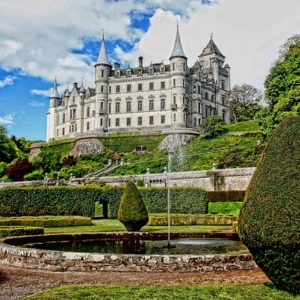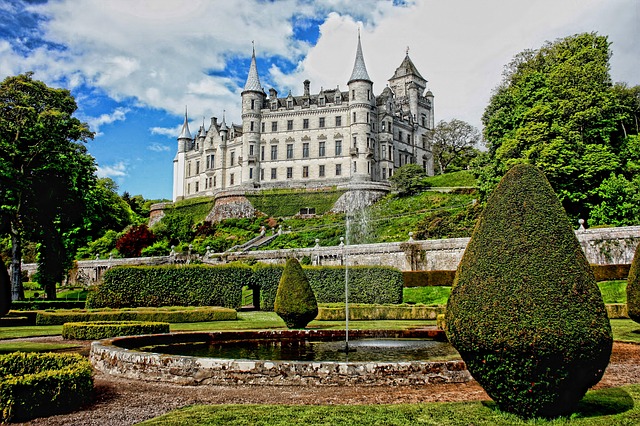Your basket is currently empty!
Himachal Pradesh – Heritage Tourism


This article will give you a quick review of Heritage Tourism in Himachal Pradesh. This information is useful if you are planning to appear for any exam for government post in Himachal.
Gurkha Castles
The castles that were suggestive of Gurkha rule back in the times have become historical heritage of Himachal Pradesh now. Though most of them stand in ruins, it is their historical value that is keeping them alive. Gurkhas had control over some major and minor princely states in Himachal until 1815 and some important forts built by them are: The Subathu Fort It is at distance of 70 km from Malaon is now under the Indian Army’s 14 Gurkha training centre. The fort still houses some cannons that are believed to be 200 years old. These cannons because of the historic value are the centre of attraction for everybody who visits the fort.
Dhar Mountain Fort
The fort is located off the Kalka-Shimla national highway, near Dr. Y.S. Parmar Horticulture and Forestry University on theSolan-Rajgarh road. It is perched on top of the Dhar Mountain that is around 1,999 ft high and gives an excellent view of Nauni, a near by locality. It is in ruins and the footway that leads to it is rough and rocky. This historic fort was built around 200 years ago when the Gurkhas won the princely state of Baghat. The central entrance to the fort is a galleried hall that is facing the east and there’s a big water tank kept in the centre. The ceiling of the upper storey is quite low and were kept low-heighted intentionally so that the soldiers could fight the invaders (the British Army) in a crawling pose and ensure safety of the same time.
The third hall at the fort is a place where visitors can witness amazing engineering skills of the Gurkhas. There’s an oval-shaped room facing east and this is the reason the roof at this part of the fort has not collapsed even after so long.
Malaon Castle
Situated near Nalagarh of Solan district this fort was built by Amar Singh Thapa, the greatest Gurkha leader in History. The fort stands as a symbol of one of Amar Singh Thapa’s steps to conquer the hill states in the west to expand his territory and increase his strength. It was in the year 1915 that Bhakti Singh Thapa was defeated and killed by Major General David Ochterlony who led the British army. Right
after his victory on Bhakti Singh Thapa, Major Ochterlony compelled Amar Singh Thapa to leave the Ramgarh Fort. Later, he built the Malaon Castle as a refuge.
Banasar Gurkha Fort
It is situated off the Kalka-Shimla highway on Kumarhatti-Nahan road at a distance of about 22 km. Over 150 years old, the fort is just one kilometre from Banasar village. Buddhist Padma Palace Monastery of Tabo in Spiti. It is more than a thousand years old. Its fine wall-paintings and stucco statues has been declared a World Heritage Site. Private Forts, Palaces, and Residences Some well preserved architecture and cobbled Himachal’s forts, palaces and residence are privately owned and the discretion of their use rests with their owners. Examples include Padama Palace Rampur, The Palace, Sarahan, Jandrighat, Dalhousie, The Palace, Jubbal. The Palace, Sunni, and The Palace, Nahan. These palaces provide visitors an insight into local lifestyles, cuisine and culture.
Arki Fort and Palace
At a distance of 38km from Shimla, Arki is a small town situated at 4100 ft above sea level in the Solan district. Arki Fort is one of the famous historical sites near Shimla. Arki was the former capital of the ancient hill-state of Baghal, which was founded by a Ajai Dev, a Panwar Rajput during 1660-1665AD. The state was founded around 1643 and Arki was declared its capital by Rana Sabha Chand in 1650. The Arki Fort was built between 1800 and 1805 by Rana Prithivi Singh, a descendent of Sabha Chand. The fort was captured by the Gurkhas in 1806 and Rana Jagat Singh, the ruler of Baghal had to take refuge in Nalagarh. From 1806 to 1815, the Gurkha General Amar Singh Thapa made use of Arki to further his advances in Himachal Pradesh. Rana Jagat Singh got back the control of Arki afterwards.
Jubbal Palace (Near Shimla)
It is situated at an altitude of 7000ft above sea level is one of the popular heritage sites in Himachal Pradesh. Designed by a French architect in 1930, the Palace architecture is a blend of Chinese. Indian and European styles. The Jubbal Palace is coloured in cream hue and has sloping roofs and red chimneys. The lower portion of the Palace, known as Rana’s abode, consists of sandstone and is noteworthy for the vast stacks of deodar timber used in its structure. The modern wing of the Palace has an Indo-European design with convoluted wooden ceiling. The deodar wood from the surrounding forest was used for the construction of the Palace structures. Another beautiful aspect is the stunning display of the collection of ancient guns used by the royal families of Jubbal.
Dagshai
At a distance of 14km from Kasauli and 18km from Solan, Dagshai is one of the oldest cantonment towns in the Solan district of Himachal Pradesh on top of a 5689 feet hillock on Kalka-Shimla Highway. Dagshai was founded in 1847 by the East India Company by securing five villages from Maharaja of Patiala, Bhupinder Singh. The village were Dabbi, Badhtiala, Chunawad, Jawag and Dagshai. The new cantonment was named after the largest Dagshai village. The name Dagshai, according to a popular local legend was derived from Daag-e-Shahi. During the Mughal times a Daag-e-Shahi (royal mark) was put on the forehead of the criminals before they were sent off to the Daghsai village. Under British rule, Dagshai developed into a major cantonment town and also housed a large prison. Construction of the jail began in 1849 and included 54 cells.
Kalka-Shimla Railway
At a distance of 84km from Shimla, Kalka is a town located in Haryana State. Kalka Railway station is the northern terminus of the Delhi-Kalka line and the starting point of the Kalka-Shimla railway line. This railway was added to the UNESCO world heritage list in the July 2008. A ride in the toy train is one of the top things to do in Shimla and it is extensively used in promotion of Himachal tourism. The Kalka-Shimla Railway was built by the British to provide access to their summer capital of Shimla. The distance of 96km between Shimla and Kalka passes through 102 tunnels 864 bridges and 900 curves. There are more than 20 stations in this route. It connects Kalka at an altitude of 656 m to Shimla at 2975m.
Kuthar Fort (Near Shimla)
At a distance of 52km from Shimla and 3.5 km from Solan, Kuthar Fort is located in Solan districof Himachal Pradesh. Kuthar Fort is about 800 years old and it is one of the main places to visit near Solan.
Sprawling over an expanse of 52.8km, this fort features beautiful gardens, fresh water springs and ancient temples within the complex.
Naggar Castle (Near Manali)
At a distance of 20km from Manali Bus Stand and 22km from the Kullu bus stand, the Naggar castle is a famous castle located in Naggar. It is one of the best places to visit in Manali. The castle overlooks the Kullu valley. From the castle one could see the far off snowcovered peaks, the Beas Valley below and the green hill sides dotted with apple orchards. The Naggar castle is a magnificent historical structure. The castle was built by Raja SidhiSingh in 1460 in an impressive combination of European and Himalayan architecture. The castle has traditional architecture called Kathkooni, which uses a combination of stones and wooden beams.
Shimla
Shimla, the state capital of Himachal Pradesh, has some of the world’s finest examples of British-colonial architecture. There is the English renaissance-inspired grey-stone former Viceregal Lodge (now the Indian Institute of Advanced Study), the neo-Gothic structures of the Gaiety Theatre and the former Imperial Civil Secretariat (now the Accountant General’s Officer). The Tudor-framed Barnes Court (now
the Raj Bhavan), the Vidhan Sabha and the Secretariat of the Government of Himachal Pradesh,. Colonial buildings can be found elsewhere in the state, especially, in the hillstations of Kasauli and Dalhousie.
Dharamshala
At a distance of 9 km from McLeod Ganj 16 km from Kangra, 237 km from Shimla, and 486 km from Delhi, Dharamshala is hill station in Kangra district of Himachal Pradesh. At an average altitude of 2,475 above sea level, it is one of the best places to visit in Himachal and among the most famous hill stations near Delhi. This is the gateway to the Kangra valley and also the headquarters of Kangra district. The
city was destroyed by a massive earthquake in the year 1905 and was reconstructed to become a health resort and a popular tourist destination. In the year 1960, Dharamshala became a temporary headquarters of His Holiness Dalai Lama. It is known as Little Lhasa or Dhasa, because of its large population of Tibetans and Buddhists.
McLeodganj
At a distance of 9km from Dharamshala, 249 km from Shimla, and 490 km from Dehli. McLeodganj is in Kangra District of Himachal Pradesh. Surrounded by the Dhauladhar ranges, it lies at an average altitude of 2082 m. Considered as a twin city of Dharamshala, McLeodGanj is one of the popular Places to visit in Himachal Pradesh. Earlier, McLeodGanj was inhabited by the indigenous Gaddi tribes and dominated by one of the world’s earliest royal clans – the Katoch Dynasty. Later, it came under the rule of the British after Second Anglo-Sikh War in 1849 AD and was named after Sir Donald Friell McLeod,
Lieutenant Governor of Punjab. Initially it was a summer resort of the British during the 1840s and became a garrison town in the 1850s.
Picture from: https://pixabay.com/en/dunrobin-castle-architecture-453164/
Leave a Reply
You must be logged in to post a comment.